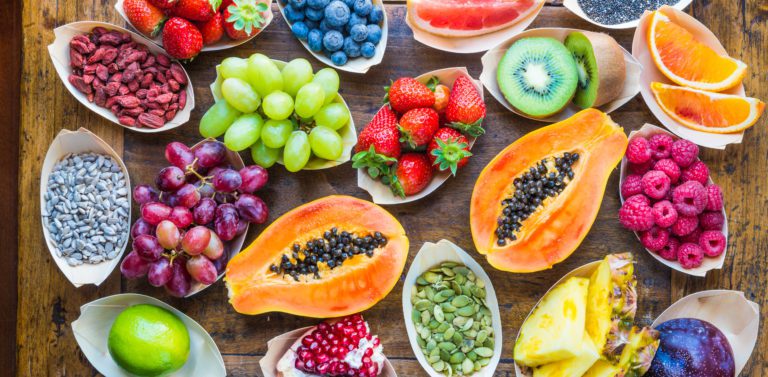Fighting with Food: How Diet Impacts Your Autoimmune Disease
If you’ve been recently diagnosed with an autoimmune disease (or if you’ve been living with one for years), you may be wondering if your diet, the food you eat may be a factor. During conversations with your doctor, the phrase “leaky gut” may have come up. What is that exactly?
In the shortest possible explanation, a leaky gut means that your gut wall has small openings that allow bacteria and other things passing through your digestive system to enter your body. When this foreign material isn’t contained by the gut, it aggravates your immune system, triggering inflammation and causing your symptoms to worsen. People who experience this long-term are diagnosed with an autoimmune disease (as the condition is considered chronic).
Leaky Gut And Autoimmune Disorder
Spend even a short amount of time online, and you’ll find tons of articles focused on “healing” your gut with nutrient-dense foods. It makes sense, though. You want to keep the bad stuff from floating around and causing havoc. For someone with a normal immune system, only certain nutrients pass through the gut into the body, but with leaky gut, more things pass through and cause inflammation, particularly gluten and the grains that contain it.
While researchers haven’t definitively stated that these foods or others cause or trigger flares. There’s a lot of consensus among individuals that removing them may lessen your symptoms. One way to do this is to begin implementing changes in your diet. It’s important to note that you cannot “cure” your autoimmune disease with food, but you can adjust your diet and lifestyle to improve your quality of life. Read more on ways to heal your autoimmune disease through alternative medicine.
Healthy diet for life: Food That Heal Autoimmune Disease
One of the most common approaches is to adopt what is known as the Autoimmune Protocol (AIP), which “works to reduce inflammation in the intestines.” AIP is similar to the Paleo Diet, but it’s also stricter. For example, Paleo allows eggs, some alcohol, and at least three non-Paleo meals per week. But since leaky gut is common in those with an autoimmune disease, this diet aims to heal the digestive tract by eliminating all foods (and beverages) that cause irritation and inflammation.
At first glance, AIP looks impossible to follow, but using it short-term will help you determine what foods give you trouble and which ones are A-OK. To figure out which is which, you need to go through an elimination period, which lasts about six weeks.
AIP TO AWD: Strengthen Your Immune
I found that for me, after a few weeks of eliminating all grains although I felt great, it was not something I was going to keep long term. The AIP is a tough diet to follow, amazing if you can and for some people this is what you might need. A more manageable diet became my own self described diet AWD Autoimmune wholesome diet. AWD rules out gluten, dairy, sugar and most grains- oats, wheat and barley. Everything else is on the table.
This nutritional plan is designed so that you eat healthy animal-based protein and fish, lots of vegetables, and plant-based fats. What you won’t find are grains, or processed foods. We all know that sugar and alcohol lack nutritional value, so those are off the table as well.
There are lots of reasons to modify your diet; namely, it’s one thing you can do on your own to take back control over your wellbeing. Food is immediate. You’ll feel the effects within hours or days, not weeks. And once you learn what to leave in and what to take out, you may need less medication.
This chart will help you simplify the process to heal your autoimmune disorder:
| “Yes” Foods | “No” Foods |
| Quality meats, including offal (organ meat) | Alcohol |
| Fish and seafood | Dairy |
| Vegetables, except those noted as “No” Foods | Eggs |
| Certain fats (avocado, coconut oil, olive oil) | Grains |
| Fruit | Legumes/Beans/Soy |
| Fermented fruits and vegetables, such as coconut milk kefir and yogurt, kimchi, and kombucha | Nightshade vegetables (eggplant; peppers and spices made from them; potatoes; tomatoes; goji berries) |
| Bone broth | Nuts and seeds |
| Processed foods (anything in a package) |
Chart based on data from www.thepaleomom.com
Bye Bye Food: Controlled Autoimmune Disease
Understanding Why the “No” Foods Are Eliminated – When you set out to heal your digestive system, you want to ingest foods that are easy to break down and provide optimal nutrition. Starting at the beginning of the list, alcohol is both an irritant and devoid of nutritional value. Both dairy and eggs are considered highly allergenic; and while milk is important for growing children, it easily passes through the gut wall. That’s great for a developing body, but not so great for most adults.
Grains are problematic because they contain gluten (a protein). To easily remember which grains to avoid, think of the acronym “BROWS,” which stands for Barley, Rye, Oats, Wheat, and Spelt. Legumes and beans are hard to digest. While they often function as a source of protein in a vegetarian diet, they contain a type of carbohydrate that autoimmune sufferers have trouble digesting. Also, as a protein, beans and lentils are less nutrient-dense than grass-fed meat, so subbing them out makes sense.
NOT Vegetables? Try Autoimmune Wholesome Diet Instead
The nightshade vegetables that are spicy, like peppers, penetrate the gut wall as well. Nuts and seeds (and their oils), along with processed foods (that are chemically altered, preserved, and adulterated) round out the list of offending foods. This is why the AIP eliminates these vegetables from diet but, I find that what causes the most disruption is the grains, dairy and sugar. If you cut everything else, you will feel a lack and more restricted. The diet will not last so long because it will hard to keep.
Try Weaning Instead of Total Elimination – into AWD, so consider eliminating one or two foods at a time. It may take longer to determine if you can add back some of these foods, but it’s important to know what causes what. One way to get a handle on this is to document your journey. For example, try eliminating gluten for two consecutive weeks. Write down how you feel. If you want to test your body’s response, reintroduce a gluten-containing food, like pasta, back into your diet a little at a time. Initially, limit yourself to just one or two bites. If all goes well, have a small portion later that same day. If your symptoms don’t return, you may be able to add that back for good.
The Goals of AWD
Following the AutoimmuneWholesome Diet, you can expect four key improvements: an increase in nutrients, better immune system function, improved gut health, and better hormone regulation. The Paleo Mom website breaks this down for the AIP diet perfectly as follows:
- Nutrient Density: When you choose a food, you want to pick something that offers the most benefits possible. Foods that contain empty calories or irritate the gut lining should be avoided.
- Gut Health: Just like your skin’s moisture barrier, which keeps skin healthy and plump, you want to keep the gut barrier intact. Bacteria and food particles don’t escape into the body and cause harm.
- Hormone Regulation: Your hormones are impacted by the world. For example, if your job is causing you sleepless nights, then your stress levels may be triggering your body to produce hormones in such a way that causes your immune system to freak out. Even things like eating too frequently or choosing high sugar or processed foods upset your hormone system.
- Immune System Regulation: Ultimately, every choice you make (food or lifestyle) contributes to the overall goal of keeping the immune system healthy.
Concept Summary and Key Takeaways
- Leaky gut means that your gut wall has small openings that allow bacteria and other things passing through your digestive system to enter your body.
- Healing your gut by adjusting your diet can reduce flares and painful symptoms.
- The Autoimmune Protocol may help you identify and eliminate foods that trigger discomfort or intestinal distress.
- Food gives you a sense of control over your autoimmune disease and its management.
- Some eliminations may only be temporary.
- You can jump all in the AIP one food at a time or go for total elimination for 6–8 weeks.
- For long-term easy in to the AWD.
- Discuss your plan with your physician before starting any diet protocol to ensure you’re healthy enough for it. You may also need supplements.









Leave a Reply